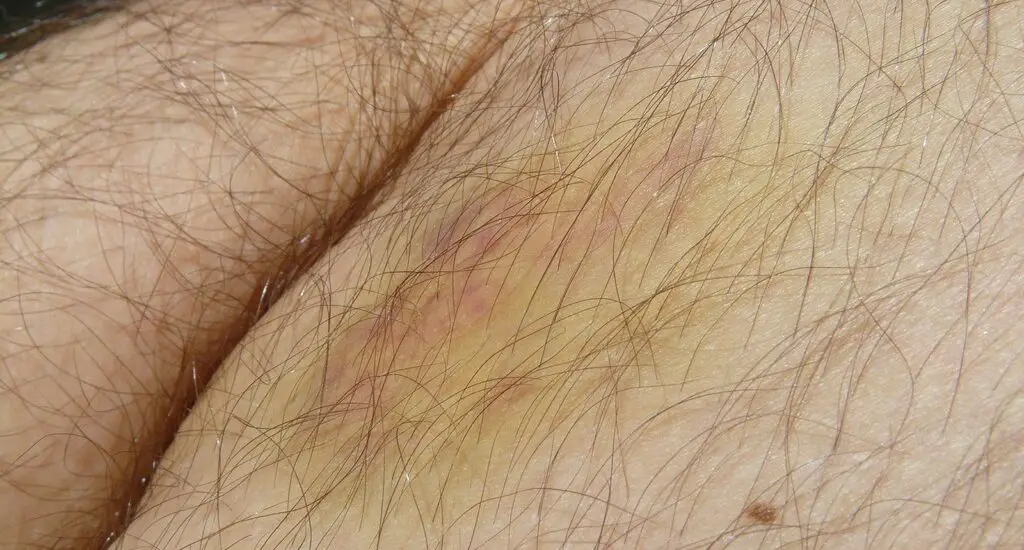In this guide, we delve into the causes of yellow skin after laser tattoo removal and provide practical steps for effective management.

From PxHere
Table of Contents
Understanding Yellow Skin After Laser Tattoo Removal
Yellow skin after laser tattoo removal session is not uncommon. This discoloration is a part of the body’s natural response to the laser treatment. The laser targets the tattoo pigment, breaking it down into smaller particles. This
process can sometimes affect the surrounding skin tissue, leading to temporary changes in skin color. The yellowing may be particularly noticeable if the tattoo contained bright colors, like yellow or green. These pigments can be more reactive to laser treatment.
It’s also worth noting that different skin types and colors might react differently to laser treatment. Some tend to show more pronounced color changes than others.
Identifying the Cause of Yellow Skin After Laser Tattoo Removal
Determining the exact cause of yellow skin is essential for proper treatment. If the discoloration appears shortly after the procedure and is localized around the treated area, it’s likely a direct result of the laser treatment. Bruising, which can appear yellow as it heals, is a common side effect of the laser’s impact on the skin.
If the discoloration appears more diffused or alongside other symptoms like swelling or tenderness, it could be an inflammatory response. In rare cases, if the yellowing persists or changes over time, it could be indicative of a deeper skin reaction or a secondary effect of the body processing the broken-down ink.
Effective Management and Care of Yellow Skin After Laser Tattoo Removal
Managing yellow skin after laser tattoo removal involves a combination of patience and proper skincare. If the yellowing is due to bruising, time is the best healer. The body will naturally reabsorb the bruised tissue, and the discoloration will fade.
To assist this process, gentle cooling of the area (using a clean, cool compress) can be soothing. If inflammation is the cause, applying a mild, hypoallergenic moisturizer can help calm the skin. It’s crucial to avoid any harsh skin treatments, such as exfoliants or alcohol-based products, as they can aggravate the skin further. In all cases, keeping the treated area clean and dry is essential to prevent infection and aid in healing.
You can get this Cetaphil Hydrating Moisturizing Lotion from Walmart.
When to Seek Medical Attention
Medical attention should be sought if the yellow skin is accompanied by symptoms. This includes severe pain, significant swelling, signs of infection (increased redness, warmth, pus), or if the discoloration does not improve or worsens over time. These symptoms can indicate complications such as an allergic reaction to the ink, an infection at the treatment site, or other skin conditions.
In such cases, a healthcare professional can assess the situation and provide appropriate care. This may include prescribing medication, or suggesting a different course of treatment. Sometimes, they might recommend further tests to better understand the underlying issue.
Check out these other articles…
How Does Skin Look After Laser Tattoo Removal: Easy Guide
Dark Skin After Laser Tattoo Removal: Easy Care Guide
What Happens to the Skin After Laser Tattoo Removal?
How to Care for Your Tattoo After Laser Removal: Easy Guide
How Long Does Skin Take to Heal After Laser Tattoo Removal?
Skin Healing After Laser Tattoo Removal: Comprehensive Guide
Hole in Skin After Laser Tattoo Removal: Comprehensive Guide
Prevention and Pre-Treatment Measures
Preventing adverse reactions like yellow skin begins with a thorough consultation before the laser tattoo removal process. Discuss your skin type, any known allergies, and previous reactions to skin treatments with your specialist. They might advise you to avoid certain medications and supplements. Or herbal remedies that can increase the risk of bruising and skin discoloration.
Proper hydration and a healthy diet in the days leading up to the procedure can also strengthen your skin’s resilience. Some specialists might recommend pre-treatment skincare regimens to prepare your skin. This is usually the case if you have a history of sensitive skin or unusual reactions to skin procedures.
Aftercare and Skin Health
After the procedure, follow all aftercare instructions provided by your specialist. This typically includes keeping the area clean using a gentle, non-irritating cleanser. Applying any recommended healing ointments or moisturizers is also important.
Avoiding direct sunlight and using a high-SPF sunscreen like this Aveeno Protect + Hydrate Body Sunscreen Lotion with SPF 60 on the treated area is crucial. UV exposure can worsen discoloration and slow down the healing process. Wearing loose clothing can prevent irritation and allow the skin to breathe. It’s also advisable to avoid hot showers, saunas, or swimming pools until the skin has fully healed to prevent infection and irritation.
Regular monitoring of the treated area for any changes or unusual symptoms is important, and any concerns should be promptly discussed with your specialist.

